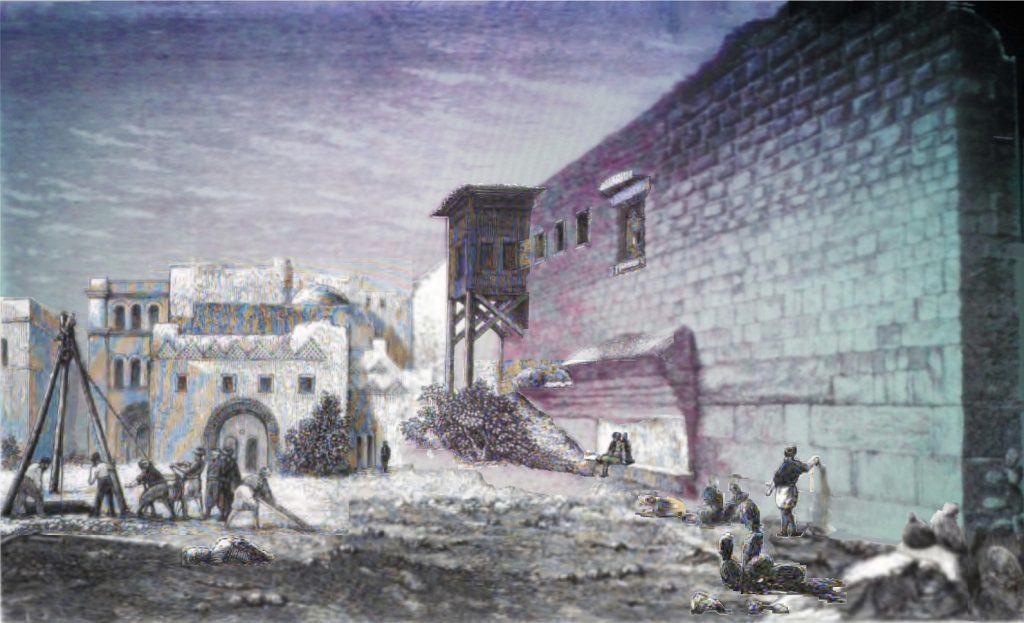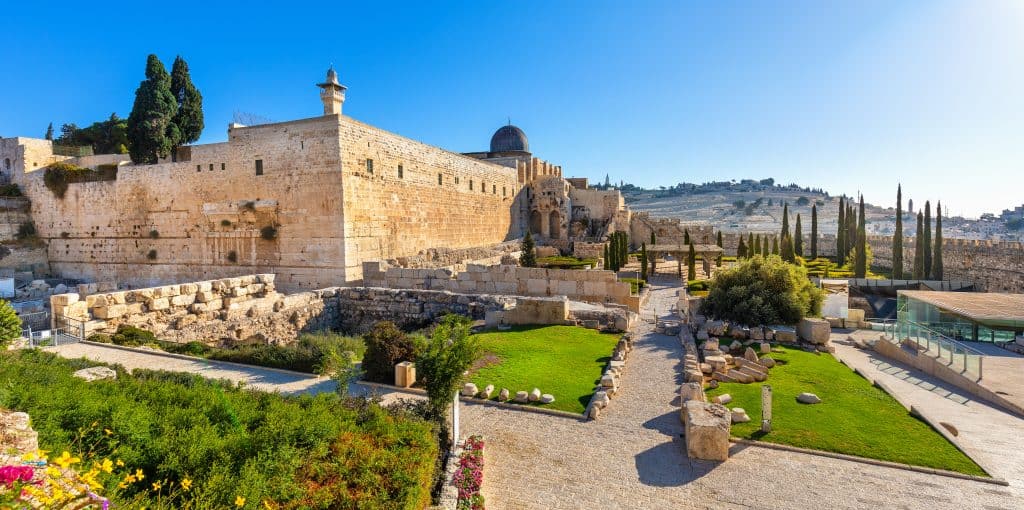In the heart of Jerusalem, a city steeped in history and spirituality stands Robinson’s Arch—a remarkable archaeological remnant that transports visitors back in time. This monumental arch is a testament to ancient engineering prowess and provides valuable insights into Jerusalem’s daily life and grandeur during the Second Temple period.
Jerusalem Ultimate Guide

Credit: Водник at ru.Wikipedia, CC BY-SA 2.5, via Wikimedia Commons.
The Discovery of Robinson’s Arch
Location: Robinson’s Arch is to be found at Davidson Archaeological Park, in the southwestern corner of the Temple Mount in the Old City of Jerusalem. It is an integral part of the complex of structures that once surrounded the Second Temple, which was destroyed in 70 CE.

Historical Significance:
Second Temple Period: Robinson’s Arch is believed to have been constructed during the Second Temple period (516 BCE to 70 CE), a time of immense religious and historical significance for the Jewish people. This arch was an essential architectural element that supported a monumental stairway connecting the city to the Temple Mount.
Pilgrimage Destination: Jerusalem attracted pilgrims from far and wide who ascended these steps to reach the sacred Temple precincts during this period. The arch played a vital role in facilitating these religious pilgrimages.

Engineering Marvel: Robinson’s Arch is a testament to the architectural ingenuity of the time. The massive stones that make up the arch are a marvel of engineering, seamlessly integrated into the retaining wall of the Temple Mount.
Old City Jerusalem Tour

Ruins and Interpretation: The arch is just a remnant of the grand staircase and bridge that once stood here. As you explore the site, you can see the giant stone voussoirs that formed the arch and imagine the impressive structure it once supported.
Visiting Robinson’s Arch:
Access to Robinson’s Arch is typically part of a more extensive visit to the Western Wall area, including the Western Wall Tunnels. But if you want to visit that alone, go to Davidson Center.
Visitors can observe the arch from a platform overlooking the archaeological site. The view allows for a closer look at the stones and the historical context.
Spiritual Reflection: For many visitors, Robinson’s Arch is a place of spiritual reflection. It serves as a tangible link to the religious practices and beliefs of the Second Temple period and connects people to the rich tapestry of Jerusalem’s history.
Edward Robinson
Conclusion:
So Robinson’s Arch is both a historical relic and a testament to the enduring significance of Jerusalem. It symbolizes the deep religious and cultural roots that run through the city’s ancient streets. As you stand in its shadow and gaze at the ancient stones, you can’t help but feel the weight of history and the timeless connection between humanity and the sacred city of Jerusalem. Lastly, you can read more about the arch on Wikipedia!

